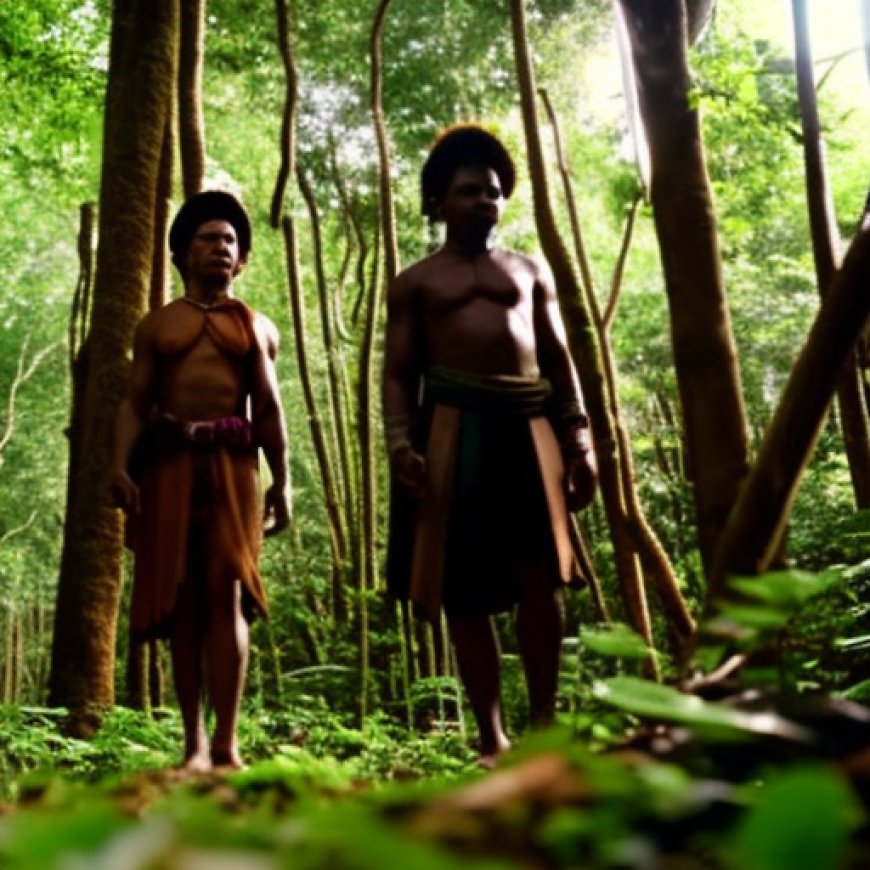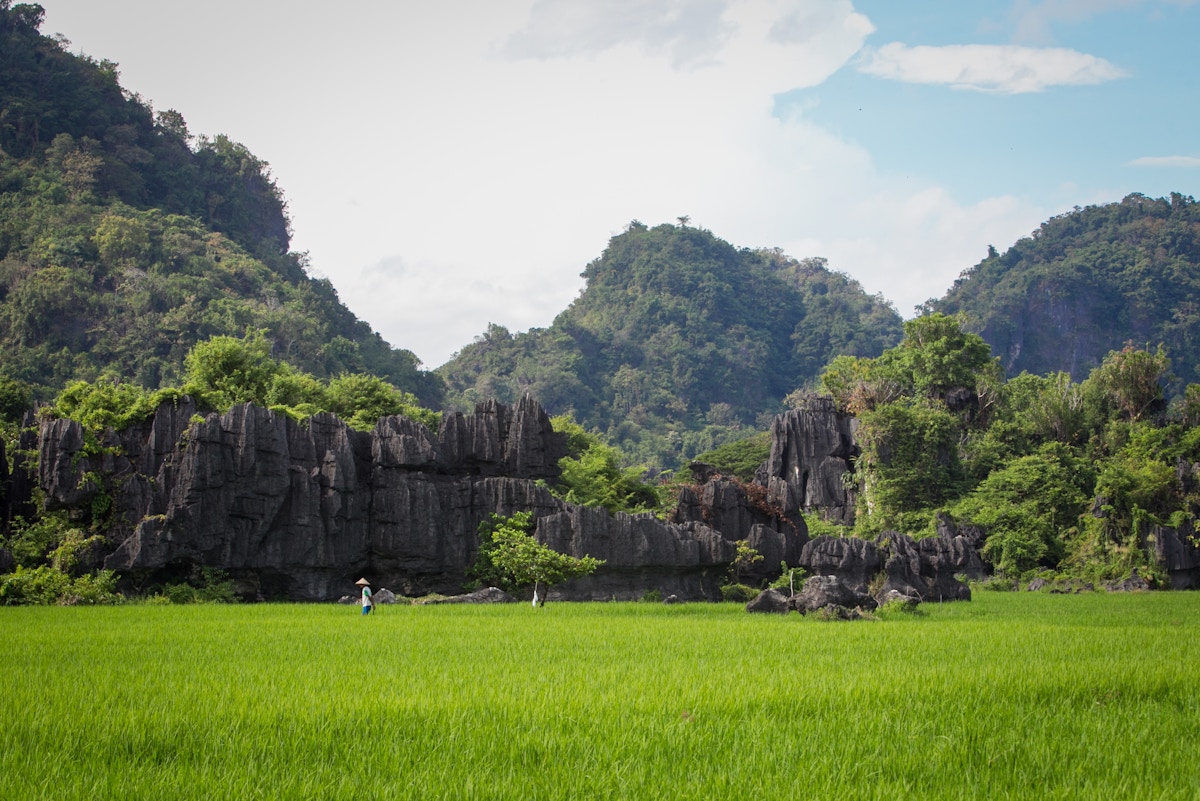‘People of the forest’: Indigenous Indonesians stake claim to land
'People of the forest': Indigenous Indonesians stake claim to land Eco-Business


Protecting Indigenous Peoples and Forests in Indonesia

Scanning the vast green expanse of tropical rainforest surrounding his village, Mino Nente noticed a pair of branches twitch in the distant canopy. The 58-year-old narrowed his eyes, raised a long wooden blowpipe to his lips, and fired a dart.
The rustling in the trees turned out to be a gust of wind rather than an intruder, but Nente and his Indigenous community on the Indonesian island of Sulawesi remain ever-vigilant to threats to their land from development.
“The forest is very important to us,” said Nente, an elder of the Wana Posangke, an Indigenous people that inhabit the central valleys and hills of Sulawesi.
“It is our lifeblood and we will fight to protect it.”
Increasing Pressure on Indigenous Territories
Like much land across the richly-forested archipelago nation, the Wana’s territory has come under increasing pressure in recent years as palm oil plantations and nickel mines have sprung up and expanded across the surrounding region.
But a government initiative is bolstering legal protections for Indigenous peoples such as the Wana, guarding them from land-grabbers and in turn helping to halt deforestation of the carbon-capturing rainforests inhabited by such communities.
In late 2016, Indonesia announced that it would return customary lands to Indigenous peoples – starting with 13,000 hectares (32,124 acres) granted to nine communities, including the Wana.
To date, the country has recognised about 153,000 hectares of customary forest for 108 communities, the government says.
However, some Indigenous leaders and analysts have voiced concerns about the land recognition process – saying it is cumbersome and prone to political interference – and questioned the government’s overall commitment to Indigenous rights.
Progress in Protecting Natural Resources and Reducing Deforestation
Despite the challenges, “there has been a lot of progress in Indonesia over the years,” according to Willem van der Muur, a Jakarta-based land tenure expert at the World Bank.
“The movement to secure land rights has been key. A lot of forest would have disappeared otherwise.”
Indonesia’s policy is spearheading a global surge in support for conservation led by Indigenous and local communities, who manage half the world’s land and 80 per cent of its biodiversity.
Their forests also store 37.7 billion tonnes of carbon – the equivalent of about 10 times the annual emissions generated by all industries and households in the European Union.
At the COP26 UN climate summit in 2021, several governments and private funders pledged US$1.7 billion to support Indigenous communities in their role as “guardians of forests and nature”, marking a significant shift from the past.
A 2021 report by the Rainforest Foundation Norway found that over the previous decade, less than 1 per cent of all climate adaptation and mitigation funding went towards projects to support Indigenous land rights and their management of forests.
Yet many studies have shown that when Indigenous peoples have land rights, they protect natural resources, and the forests under their care are less likely to be deforested.
Struggle for Land Recognition and Rights
In the case of the Wana, who have inhabited central Sulawesi for generations, a traditional law called “lempa dua” – meaning “the balance of life” – forbids exploitation of most of the forest, other than small areas for subsistence.
“Nobody understands Mother Nature better than them,” said Amran Tambaru, regional director of Merah Putih Foundation (YMP), a nonprofit that helped the Wana receive recognition.
In order to obtain customary forest recognition, communities must go through a years-long process of participatory mapping to avoid land conflicts – requiring the support of a local nonprofit – then enter negotiations with regional authorities.
But land tenure analysts say this gives regional politicians, prone to conflicts of interest, too much power – with no enforcement mechanism to regulate the process.
The Wana – whose application took several years to complete – requested 25,526 hectares of customary forest, but authorities recognised just less than a quarter of the land they sought.
“This local-national dynamic is partly why they [community-recognised forests] have not spread more,” said Van der Muur of the World Bank.
There are 13.76 million hectares of potential customary forests across Indonesia – meaning that only 1 per cent has been recognised to date, according to the Ancestral Domain Registration Agency (BRWA), a nonprofit.
“If you compare this to the number of palm oil, mining and logging permits given, it’s very small,” said Sombolinggi of AMAN.
SDGs, Targets, and Indicators
1. Which SDGs are addressed or connected to the issues highlighted in the article?
- SDG 15: Life on Land
- SDG 13: Climate Action
- SDG 10: Reduced Inequalities
The article discusses the protection of Indigenous lands and forests in Indonesia, which is directly related to SDG 15: Life on Land. This goal aims to protect, restore, and promote sustainable use of terrestrial ecosystems, sustainably manage forests, combat desertification, halt and reverse land degradation, and halt biodiversity loss. The article also mentions the role of Indigenous communities in managing forests and their contribution to climate action, connecting to SDG 13: Climate Action. Additionally, the article highlights the struggle for land recognition and rights faced by Indigenous peoples, which relates to SDG 10: Reduced Inequalities, as it emphasizes the need to ensure equal access to land and resources for all.
2. What specific targets under those SDGs can be identified based on the article’s content?
- Target 15.2: By 2020, promote the implementation of sustainable management of all types of forests, halt deforestation, restore degraded forests, and substantially increase afforestation and reforestation globally.
- Target 13.2: Integrate climate change measures into national policies, strategies, and planning.
- Target 10.2: By 2030, empower and promote the social, economic, and political inclusion of all, irrespective of age, sex, disability, race, ethnicity, origin, religion or economic or other status.
Based on the article’s content, the specific targets that can be identified are Target 15.2, which focuses on sustainable forest management and halting deforestation, Target 13.2, which emphasizes integrating climate change measures into policies and planning, and Target 10.2, which aims to promote social, economic, and political inclusion for all.
3. Are there any indicators mentioned or implied in the article that can be used to measure progress towards the identified targets?
- Indicator 15.2.1: Progress towards sustainable forest management.
- Indicator 13.2.1: Number of countries that have integrated climate change measures into national policies, strategies, and planning.
- Indicator 10.2.1: Proportion of people living below 50 percent of median income, disaggregated by age, sex, and Indigenous status.
The article does not explicitly mention indicators, but based on the identified targets, the following indicators can be used to measure progress: Indicator 15.2.1, which measures progress towards sustainable forest management, Indicator 13.2.1, which tracks the integration of climate change measures into national policies, strategies, and planning, and Indicator 10.2.1, which measures the proportion of people living below 50 percent of median income disaggregated by age, sex, and Indigenous status.
Table: SDGs, Targets, and Indicators
| SDGs | Targets | Indicators |
|---|---|---|
| SDG 15: Life on Land | Target 15.2: By 2020, promote the implementation of sustainable management of all types of forests, halt deforestation, restore degraded forests, and substantially increase afforestation and reforestation globally. | Indicator 15.2.1: Progress towards sustainable forest management. |
| SDG 13: Climate Action | Target 13.2: Integrate climate change measures into national policies, strategies, and planning. | Indicator 13.2.1: Number of countries that have integrated climate change measures into national policies, strategies, and planning. |
| SDG 10: Reduced Inequalities | Target 10.2: By 2030, empower and promote the social, economic, and political inclusion of all, irrespective of age, sex, disability, race, ethnicity, origin, religion or economic or other status. | Indicator 10.2.1: Proportion of people living below 50 percent of median income, disaggregated by age, sex, and Indigenous status. |
Behold! This splendid article springs forth from the wellspring of knowledge, shaped by a wondrous proprietary AI technology that delved into a vast ocean of data, illuminating the path towards the Sustainable Development Goals. Remember that all rights are reserved by SDG Investors LLC, empowering us to champion progress together.
Source: eco-business.com

Join us, as fellow seekers of change, on a transformative journey at https://sdgtalks.ai/welcome, where you can become a member and actively contribute to shaping a brighter future.







